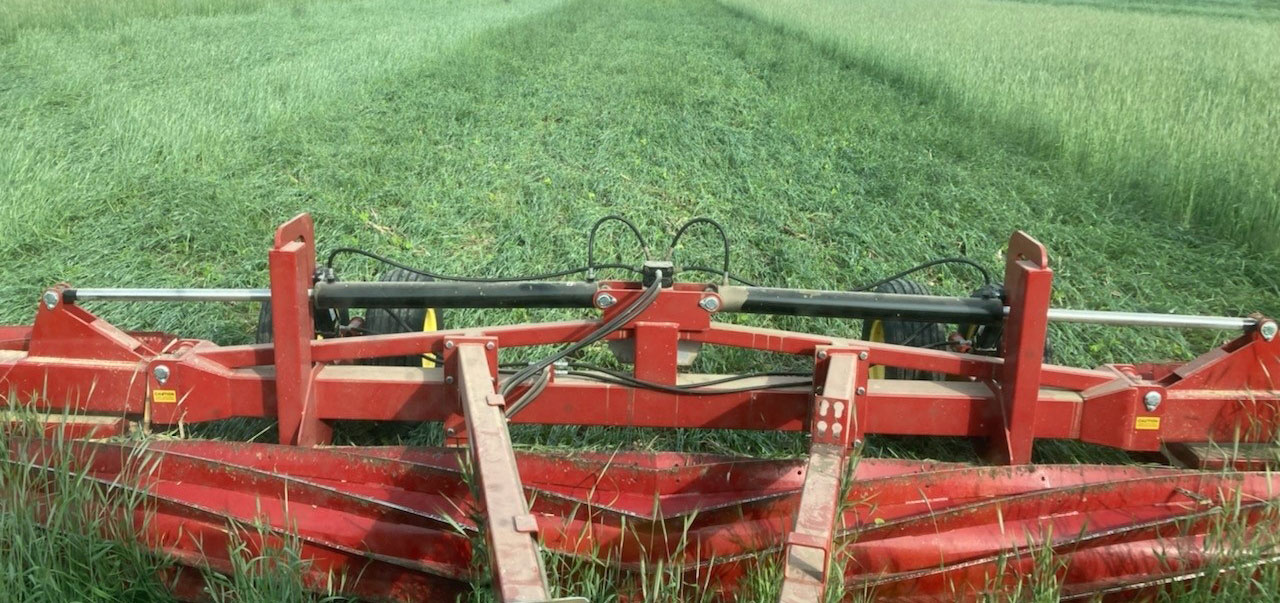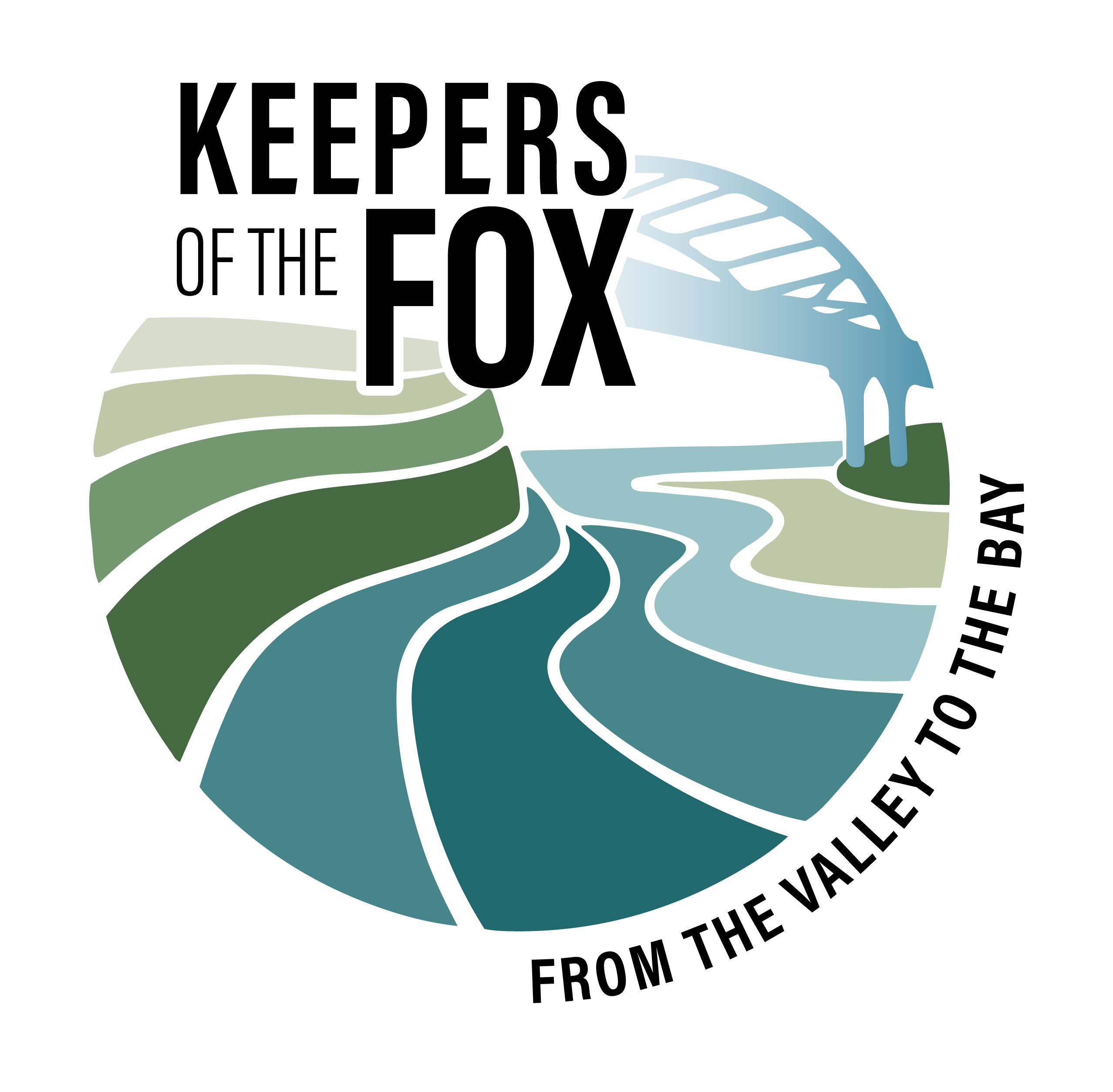Adapted from an article originally submitted by Zach Laughlin, Fond du Lac County LWCD
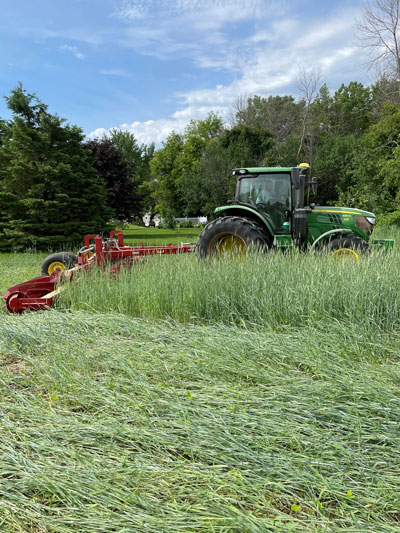
Dave Simon operating his roller crimper before planting in 2022
Dave Simon, one of our Pipe Farmer Champions in Fond du Lac County, trialed his roller crimper in several of his soybean fields during the month of June. The roller crimper, as shown in the photos, is a tool used by farmers to mechanically terminate (kill) cover crops.
The crimper is a large, rolling cylinder with grooves on it to flatten the rye and crimp the stem to prevent the flow of nutrients to the head of the plant where the seeds are produced. Flattening the cover crops creates a protective layer of residue on the soil surface. Farmers can then plan cash crops directly into the residual cover. The mat of residue (the dead cover crop) protects the soil from water erosion and also acts like a mulch, preventing moisture loss through evaporation.
Farmers who use this method have to wait until the rye is in the developmental stage known as “anthesis.” The crimped rye provides weed control for the year and eliminates the need for at least one, possibly two herbicide passes in the fields.
According to the Practical Farmers of Iowa, at anthesis there will be yellow pollen tubes visible all over the seed heads. Since rye seed heads do not all emerge at the same time, neither will they reach anthesis at the same time. They advise waiting until early emerging seed heads are in full anthesis and late emerging seed heads have at least a few pollen tubes visible, which usually occurs in late May or early June in Iowa. If it is rolled prior to anthesis, the rye will not be killed and will spring back up and continue to grow.
What Dave found this year is that this method worked with variable effectiveness. The areas of fields that had the thickest stand of rye tended to have the best termination. Areas of the field in which the rye was either shorter in height or less dense with plants, tended to stand back up again.
Dave’s experience with the roller crimper is common. Using a roller crimper requires several variables to fall into place at the right time in order for this method to work. Some years the crimping method will work great. Others, not as much. After scouting the field, we believe that the rye’s unevenness was likely due to a lack of moisture in the fall and winter months.
Photos of Dave’s roller crimper process in 2022
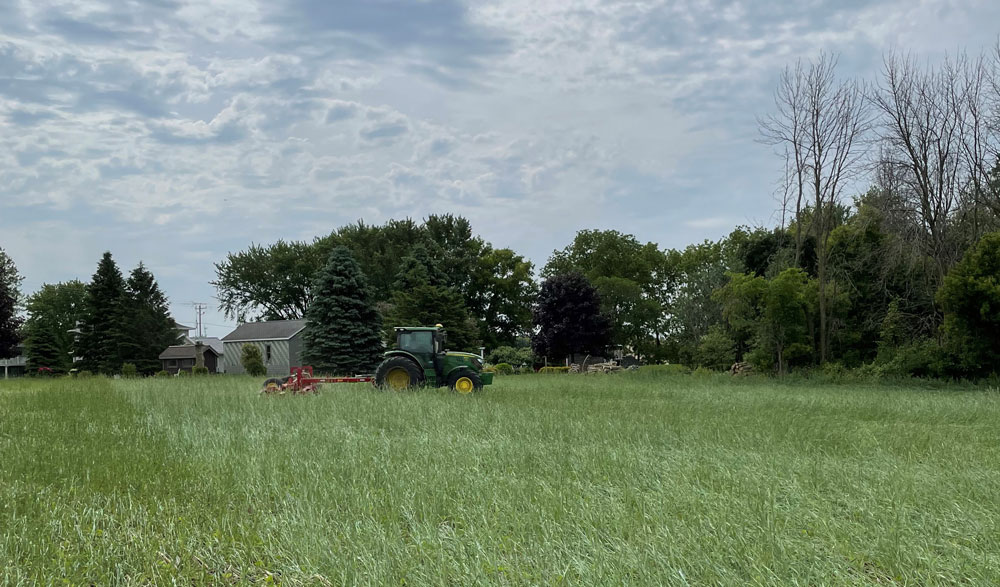
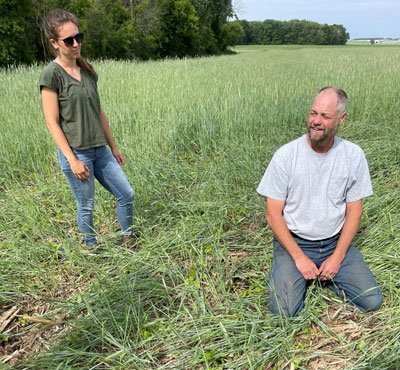
Follow Fond du Lac LWCD on Facebook for updates: CLICK HERE
CLICK HERE to learn more about the 3-year GLRI project.
Pipe Creek GLRI project partners:
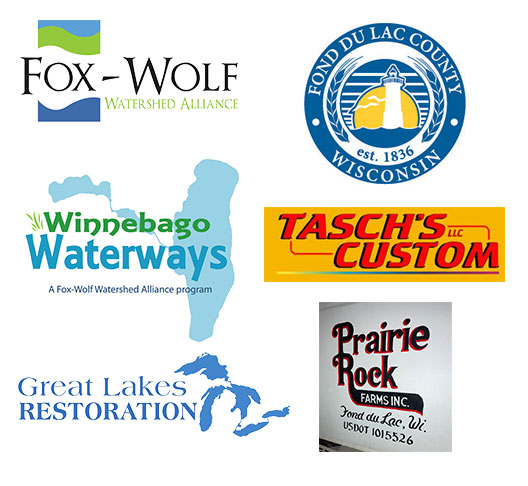
Questions? Contact us:
Climate Smart Agriculture Project Manager: Katie Woodrow, 920.915.5767 or katie@fwwa.org
To receive periodic updates on these projects as well as many others, please subscribe to our newsletters: CLICK HERE

